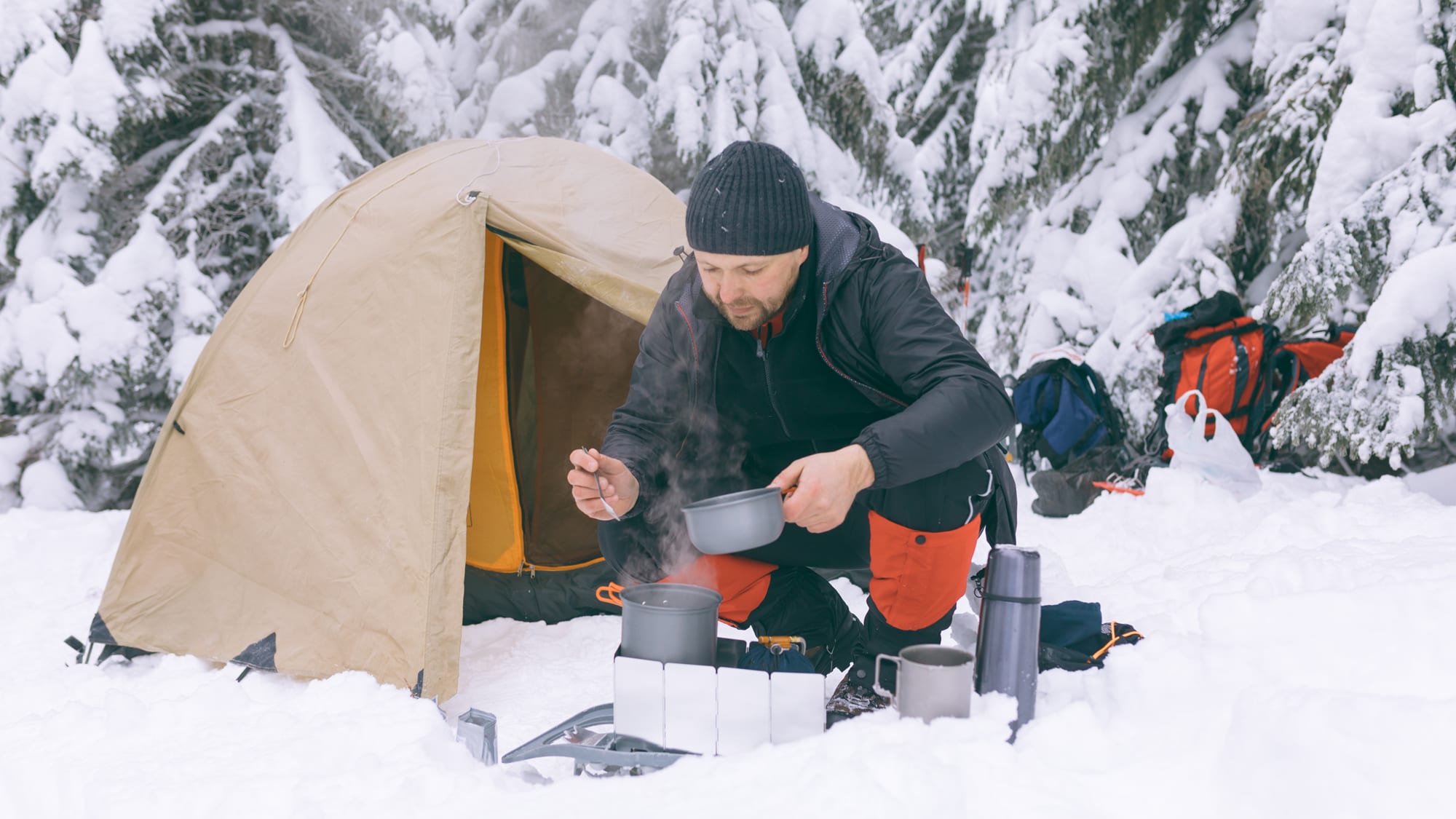If you’re camping in winter, you likely already know that staying warm and dry is job number one. Job number two? Eating right.
“In my 25-plus years as an outdoor educator, I’ve dealt with more cases of dehydration and low blood sugar in winter than any other season,” says David Delafield, an assistant professor and co-chair of the outward pursuits program at Burman University in Lacombe, Alberta. “The combination of being cold and worn out from a day’s activities can reduce a camper’s drive for personal care.”
That is, you get lazy about eating and drinking properly, which impacts your energy level as well as your ability to stay warm while in the wilderness. But with a little planning, the right equipment and some patience, it’s possible to enjoy some excellent winter camp cooking that nourishes both body and soul. Here are a few of Delafield’s top tips.
STAY HYDRATED
Drink at least three or four litres of fluids daily. That may sound like a lot, but in frigid temperatures, moisture is being rapidly pulled from your body, including simply by breathing. It’s all too easy to forget about drinking in winter, since many of your body’s hydration cues—like being hot or sweaty—are diminished by the cold. Fortunately, water is all around us in winter. Water from a flowing stream can be boiled for five minutes to minimize biological contaminants, and freshly fallen snow is also considered safe to consume.
MORE TO READ
Practical advice for staying warm while winter camping
MELTING HELP
Properly melting snow for water, however, takes a lot time and energy. To aid the process, always start by warming some liquid water in your pot, then add a small amount of snow to create a slurry-like consistency. From there, slowly add more snow, using a ladle to tamp down the snow and maintain the slurry. If you don’t use water to start the process, your snow is more likely to evaporate rather than melt—and what little liquid you do end up with will have a burnt flavour.
BRING LOTS OF SNACKS
Because your body will be using more energy to stay warm, you’ll need a good supply of nutrient-dense nibbles to make up the deficit. Think trail mix, chocolate, cheese curds and salami. These easy-to-pack foods not only provide extra energy for daytime activities, the process of digesting them also helps to warm your body.
MAKE MOISTURE-RICH MEALS
For dinner, a hearty chili or stew, which has both liquid and solid food, can be a wonderful source of nourishment and hydration. Because the proteins and fat in the meal take longer to digest, they’ll help sustain your body temperature longer into the night. And frankly, it’s just nice to be able to cradle a bowl of hot soup in your hands.
MORE TO READ
Our top tips for safe driving in winter weather
Another benefit of these one-pot meals? You can make and freeze them at home—and they’ll stay frozen while you’re camping. Winter camp cooking can take a long time. As the sun and temperatures go down, you’ll be glad to be able to just reheat a frozen block of chili rather than having to prepare a dish from scratch.
GEAR GUIDANCE
For melting snow alone, a four-litre pot (i.e. one such pot for every four people in your camping party) is absolutely essential. You want to be able to melt as much as you can in a single session.
For storing melted snow and/or boiled water, it can be useful to have a few hot water bottles on-hand, which can double as sleeping-bag warmers. It’s also possible to keep water from freezing by burying your containers in about two feet of snow. Store them upside down so any ice forms at the bottom of the bottle instead of the top.
For cooking, bring a stove that uses liquid fuel (e.g. white gas), which performs better in cold temperatures. Below freezing, standard compressed-gas stoves really lose efficiency; it can be a struggle to keep their propane or isobutane canisters warm enough to get the fuel out.
HOW TO SAVE
Dinner wares: AMA members earn 4% in reward dollars on winter camp cooking equipment, including pots, pans and thermoses, at Altitude Sports.
Good for groceries: Before buying your provisions, get a Sobeys/Safeway or President’s Choice prepaid card from any AMA centre to earn 5% in reward dollars on the purchase price.
